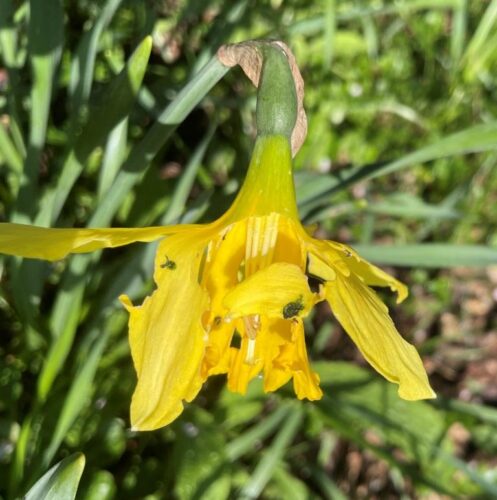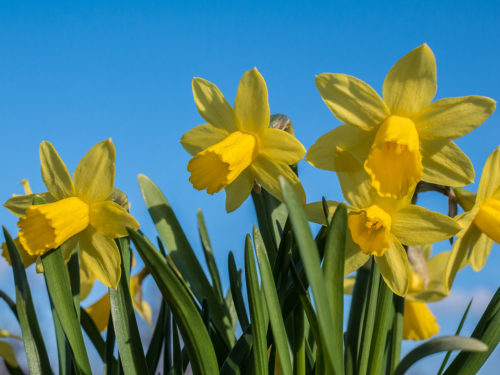Daffodil, bulbous plant and namesake of the amaryllis family. Daffodils like humus-rich soil and a spot in partial shade.
You are viewing the mobile-adapted version of the page.
The one for tablets, laptop and desktop also provides general information, such as origin, toxicity and cultivation.
Daffodil – (narcissus). Bulbous plant and namesake of the amaryllis family (Amaryllidaceae). Daffodils like humus-rich soil and a spot in partial shade.
Daffodils need a period of cold to grow.
Planting depth twice the height of the bulb (+ 17 cm); distance between bulbs + 15 cm; planting in October.
Once the daffodil begins to wilt, cut away the stem and clean up flower remnants. This prevents diseases and fungi from settling in the flower remains. Leave the leaves in place and do not remove them even when they wither: the nutrients from the leaves go back into the bulb.
If daffodils are in a good spot, they multiply easily and form large groups. However, often the flower does get a little smaller each year, but there are more and more of them.
Even in the vase, daffodils secrete substances that are toxic to other plants. Therefore, other flowers, such as tulips, put in one vase with daffodils tolerate the daffodils poorly. A little plant food prevents premature wilting of the other flowers.
Bugs
Daffodil bulb
Brown streaks on the roots from which the bulb
It starts with round, yellowish spots on the leaves. If there are many more, the leaves become misshapen, twisted and swollen here and there. Daffodil lags in growth and eventually dies: stem nematode (Ditylenchus dipsaci).

Holes in the flowers; sometimes the flowers are almost completely eaten away. Sometimes some snail poop is left behind: snails and slugs.
Fungi & diseases
Small pointed infestations in the tips of unfurling leaves. Red discolorations appear around the affected spots: leaf scorch (daffodil) (Peyronellaea curtisii). Initially, the infestations look like frost damage.
The bulb turns dark brown at the roots, sometimes grey. The bulb softens and between the skirts is white or pink fungus. Usually the infestation is not seen until the
Yellow-green, circle-shaped spots on leaves; serpentine lines: Cucumber mosaic virus (CMV).

